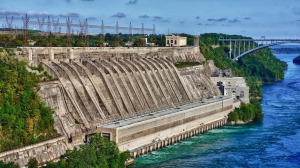A major increase in the construction of hydropower dams is underway, mainly in developing countries and emerging economies. Since this trend is expected to double global electricity production from hydropower, it could reduce the number of our last remaining large free-flowing rivers by about 20 percent and pose a serious threat to freshwater biodiversity.
A new database has been developed to support decision making on sustainable modes of electricity production. It was presented this month at the international congress Global Challenges: Achieving Sustainability hosted by the University of Copenhagen.
The increasing demand for electricity from renewable sources has kick-started the hydropower development into a new era. Following a period of a flattening trend, an unprecedented number of dams for electricity production is currently under construction or planned worldwide.
However, this boom is occurring, primarily, in developing countries and emerging economies in South America, Southeast Asia and Africa, that also hold some of the world’s most important sites for freshwater biodiversity.
“Hydropower is an integrated part of transitioning to renewable energy and currently the largest contributor of renewable electricity. However, it is vital that hydropower dams do not create a new problem for the biodiversity in the world’s freshwater systems, due to fragmentation and the expected changes in the flow and sediment regime. That is why we have compiled available data on future expected hydropower dams — to form a key foundation for evaluating where and how to build the dams and how to operate them sustainably,” says Prof. Dr. Christiane Zarfl (now Universität Tübingen) who, together with her colleagues, performed the study at the Leibniz-Institute of Freshwater Ecology and Inland Fisheries (IGB) in Berlin. She is presenting the database today at the congress Global Challenges: Achieving Sustainability.
Electricity capacity may double with hydropower
Renewable energy currently accounts for 20 percent of the global electricity production, with hydropower contributing 80 percent of the total share. An expected 3700 major dams may more than double the total electricity capacity of hydropower to 1,700 GW within the next two decades.
Considering all the planned dams, China will remain the global leader in hydropower dam construction although their share of total future global hydropower production will decline from currently 31 to 25 percent, due to increases in other parts of the world.
The largest total number of new dams in South America will be in the Amazon and La Plata basins, whereas the Ganges-Brahmaputra basin (mainly India and Nepal) and the Yangtze basin in China will face the highest dam construction in Asia.
“When building new dams, it is important to follow a systematic management approach that considers the ecological, social, and economic consequences of multiple dams within a river basin,” says Prof. Dr. Klement Tockner, head of IGB, who is leading the Institute´s research activities on sustainable hydropower development.
“We expect to launch the database in BioFresh, the platform for global freshwater biodiversity and hope to see our results as a valuable reference basis for scientists and decision makers in supporting sustainable hydropower development,” says Prof. Dr. Christiane Zarfl.
At UPS Battery Center, our goal isn’t to only sell batteries, we want to inform and teach you about the amazing world of batteries, electricity and energy. Please check back for more interesting, helpful and informative articles about batteries and electricity.
Related Articles:
What is pumped-storage hydroelectricity?
An Advanced Power-Conversion Switch Helps Upgrade U.S. Power Grid
The Instability of the World’s Power Supplies Need Immediate Action




